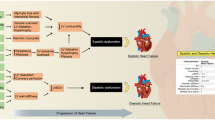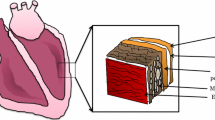Abstract
Heart failure (HF) is a major cause of death and hospitalization worldwide. Despite advances in reducing mortality, prognosis remains poor and prevalence has reached epidemic proportions. The limitations of available preclinical models represent a major hurdle in the development of new therapies. Myocardial infarction (MI) is a main cause of HF in humans, and mouse models of MI are often used to study HF mechanisms and experimental treatments. We investigated whether MI in mice constitutes an appropriate model of HF. Permanent ligation of the left coronary artery induced severe and persistent systolic dysfunction and ventricular dilatation. Mouse follow-up for 10 months showed no significant evidence of lung congestion or other pulmonary defects associated with HF. No difference was observed in the capacity of infarcted mice to exercise compared to control animals. These results indicate that severe cardiac dysfunction in mice is not sufficient to demonstrate the presence of HF.

Similar content being viewed by others
References
Lara-Pezzi, E., Menasché, P., Trouvin, J.-H., et al. (2015). Guidelines for translational research in heart failure. Journal of Cardiovascular Translational Research, 8, 3–22.
Houser, S. R., Margulies, K. B., Murphy, A. M., et al. (2012). Animal models of heart failure: a scientific statement from the American Heart Association. Circulation Research, 111, 131–150.
Minicucci, M. F., Azevedo, P. S., Polegato, B. F., et al. (2011). Heart failure after myocardial infarction: clinical implications and treatment. Clinical Cardiology, 34, 410–414.
Villalba-Orero, M., López-Olañeta, M. M., González-López, E., et al. (2017). Lung ultrasound as a translational approach for non-invasive assessment of heart failure with reduced or preserved ejection fraction in mice. Cardiovascular Research. doi:10.1093/cvr/cvx090.
Funding
This work was supported by grants from the Spanish Ministry of Economy and Competitiveness (SAF2015-65722-R to E.L-P), Autonomous Community of Madrid (2010-BMD2321, FIBROTEAM Consortium), European Union’s FP7 (CardioNeT-ITN-289600, CardioNext-ITN-608027 to E.L-P), the Spanish Carlos III Institute of Health (CPII14/00027 and RD12/0042/066 to E.L-P). This work was also supported by the Plan Estatal de I+D+I 2013–2016—European Regional Development Fund (FEDER) “A way of making Europe,” Spain. The CNIC is supported by the Spanish Ministry of Economy and Competitiveness (MINECO) and the Pro-CNIC Foundation, and is a Severo Ochoa Center of Excellence (MINECO award SEV-2015-0505).
Author information
Authors and Affiliations
Corresponding author
Ethics declarations
Conflict of Interest
The authors declare that they have no conflict of interest.
Ethical Approval
All procedures performed in studies involving animals were in accordance with the ethical standards of the institution or practice at which the studies were conducted.
Additional information
Associate Editor Paul J. R. Barton oversaw the review of this article
Rights and permissions
About this article
Cite this article
Villalba-Orero, M., López-Olañeta, M., García-Pavía, P. et al. Systolic Dysfunction in Infarcted Mice Does Not Necessarily Lead to Heart Failure: Need to Refine Preclinical Models. J. of Cardiovasc. Trans. Res. 10, 499–501 (2017). https://doi.org/10.1007/s12265-017-9765-x
Received:
Accepted:
Published:
Issue Date:
DOI: https://doi.org/10.1007/s12265-017-9765-x




